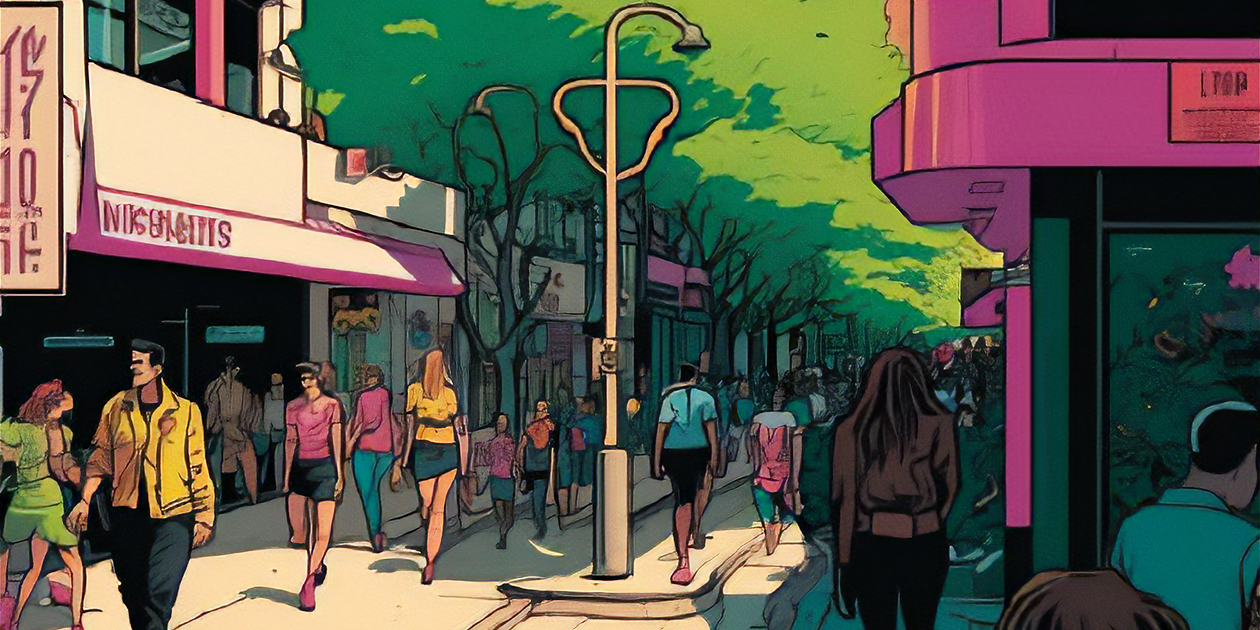Introduction
Nowadays, many cities are facing different challenges – such as the housing affordability crisis and the climate emergency. Good urban planning is part of the solution to these problems, and public participation is an important part of the process.
Public participation in urban planning is essential to ensure transparency, involvement and trust, leading to better outcomes for all stakeholders in the process of planning our cities. This is especially true in the City of Kitchener, in the province of Ontario, Canada. This city of about 270,000 people launched Growing Together workshops where the public could participate in the urban planning process. Modelur proved to be an indispensable tool to run the process.
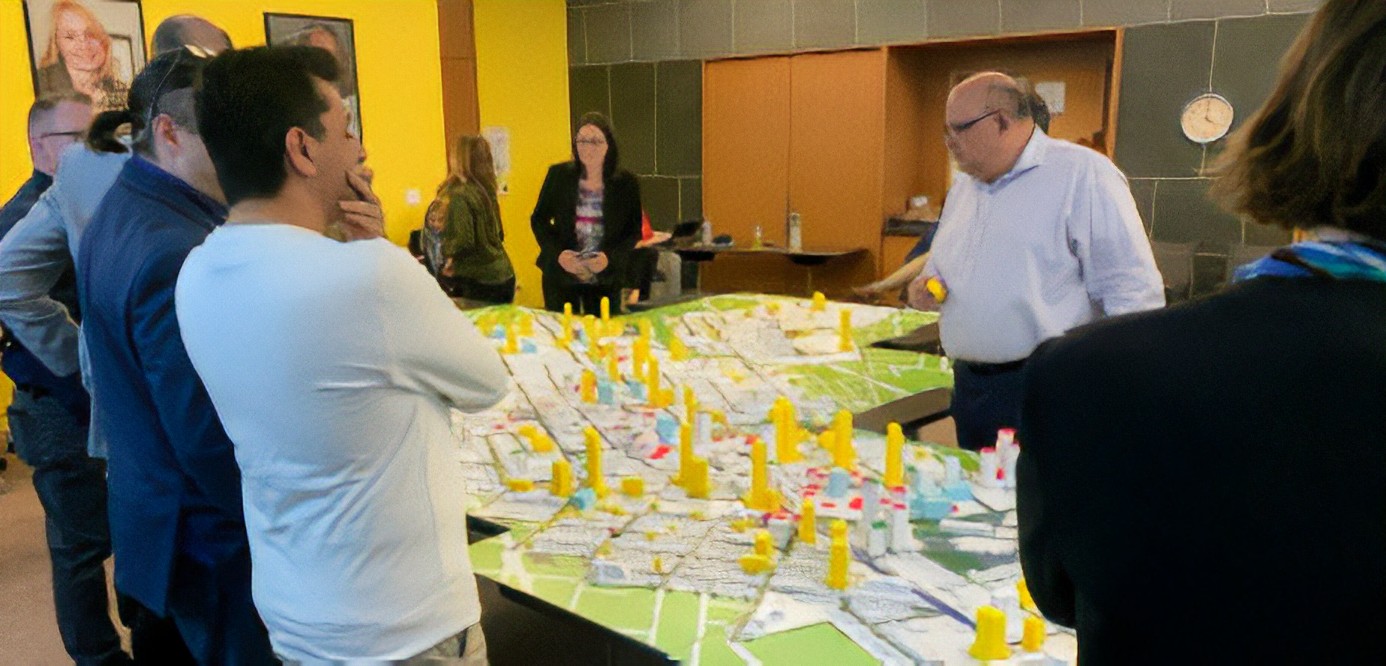
Public Engagement
The City of Kitchener decided to reach out to the public through the Growing Together project and held several public workshops in March and April 2023. Prior to the public workshops, the workshop format was tested and when it was found to work, the public workshops were held. A total of 12 workshops were held, 6 of which were community workshops, and one workshop was held with the mayor and city councilP

During each workshop, participants were asked to place 3D printed buildings, representing new growth that the City of Kitchener needs to plan for, on a large-scale 3D printed model of the study area. During the workshops, staff continuously discussed with participants their priorities, concerns, and aspirations for the study area. At the end of each workshop, the results were photographed in detail and then the model was recreated exactly in SketchUp using Modelur.
The workshops were unrelated and conducted independently, but all used identical materials and input data. When all the workshops were completed, each was analyzed separately.
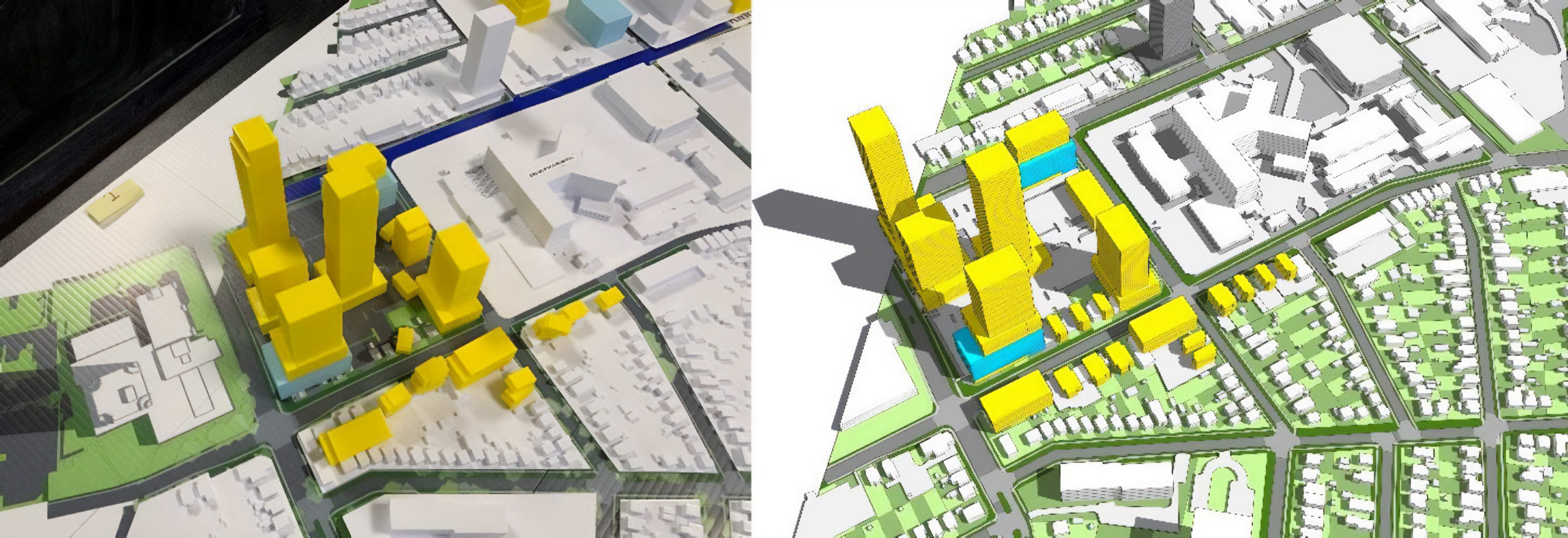
Smart Model
Each building placed by a community member was recreated in a digital smart model unique to each workshop using Modelur. The smart model contains information about every building within it (how many housing units it represents, how many people and jobs it contains) and provides instant access to data on area density, people to job ratios… This allows staff to directly align the community input received with various technical land use planning requirements, allowing for direct comparisons and translating workshop results into mapping and data sets with real-world applicability.
Modelur was used to analyze a total of 7 scenarios (one from each community workshop and one from the workshop with the mayor and city council), looking at density, housing supply, building typology mix, parking, and more.
The team did not use Modelur to create visualizations. Instead, they took screenshots of Modelur models and compared them with photos of the models from the workshops. Along with the screenshots, the mapping of where the workshop participants placed the buildings was used in the Growing Together project report.
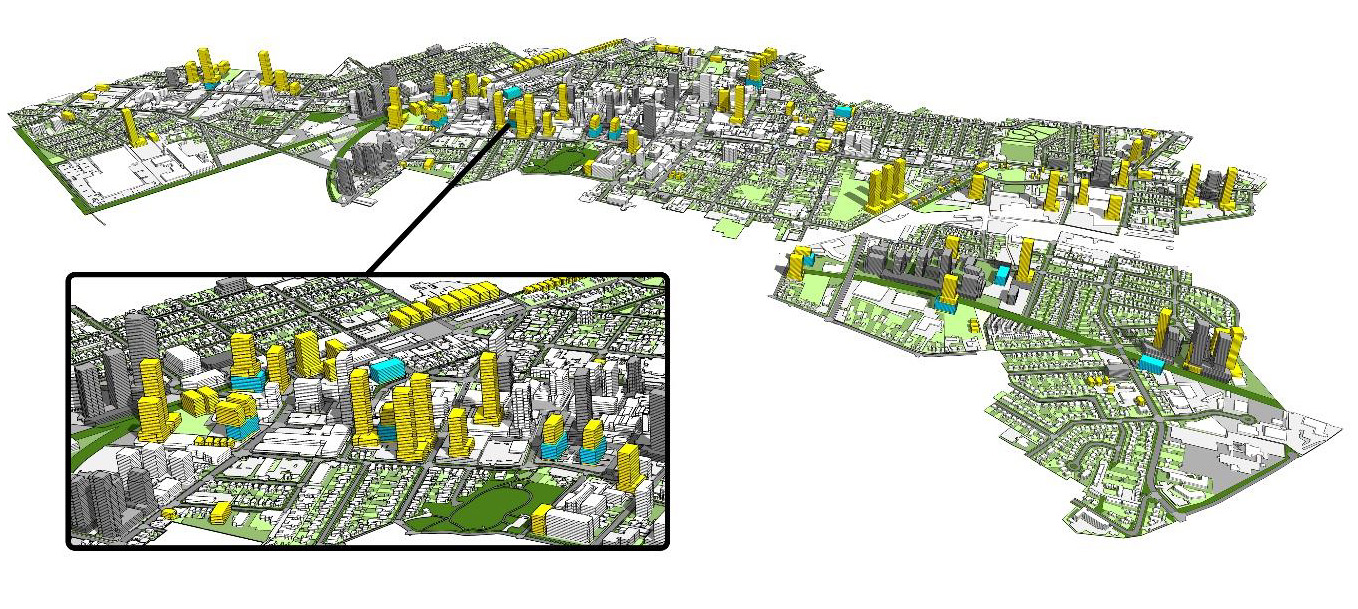
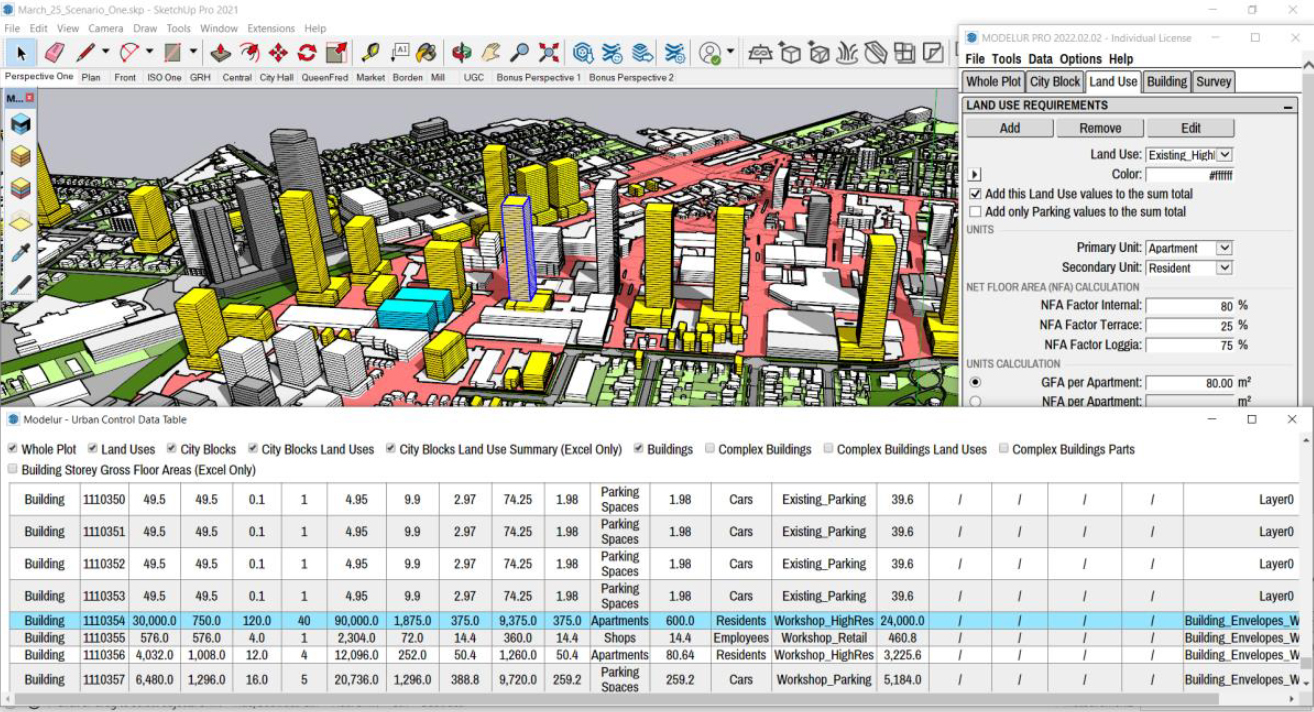
Driving Zoning Recommendations
After the workshops were completed, the results were presented to the City Council. The placement of buildings was mapped, and the mapping from all 7 scenarios was used to develop draft land use and zoning recommendations. The analysis was summarized in the report presented to the Council in June 2023.
This process allowed planners to perform highly detailed technical analysis directly on the scenarios provided by the public. This was the first time a city has done public engagement where the results can be captured and analyzed with this level of sophistication. It also gives planners a real ability to report back exactly what they heard from the public through a fully documented and visualized process.
With the Growing Together project, the City of Kitchener won the following awards:
- a Smart50 Award, an international award honoring the 50 most transformative smart projects of the year; additionally, at the Smart Cities Connect conference in Denver in May 2023, Growing Together was announced as one of the top-3 projects overall;
- a 2023 Excellence in Municipal Systems award by the Municipal Information Systems Association of Ontario;
- honorable mention at the 2023 International Association for Public Participation (IAP2) Canada Core Values Awards;
- a finalist for the World Smart City Awards in the Infrastructure and Building project award category (Smart City Expo World Congress is the world’s biggest and most influential event on urban innovation).
Conclusion
How Modelur helped improve the process?
In the process, Modelur saved the staff a lot of time. While the 3D modeling of each scenario took about the same amount of time (about 2 hours per scenario) as it would have without Modelur, the analysis time was a fraction of what it would have been – if such an analysis was even possible without Modelur. Once the methodology was worked out, it took about an hour to analyze each scenario. Most of the work consisted of summing various totals from the Excel spreadsheet and performing simple density or distribution calculations.
For comparison, using traditional GIS tools in the past, only 2-3 scenarios could be tested over a period of weeks, with minimal ability to look at the scenarios from different perspectives. Using Modelur, 7 scenarios were tested in about a week, with more flexibility to compare different things than before. However, it is important to note that these two processes use very different methodologies and are not directly comparable.

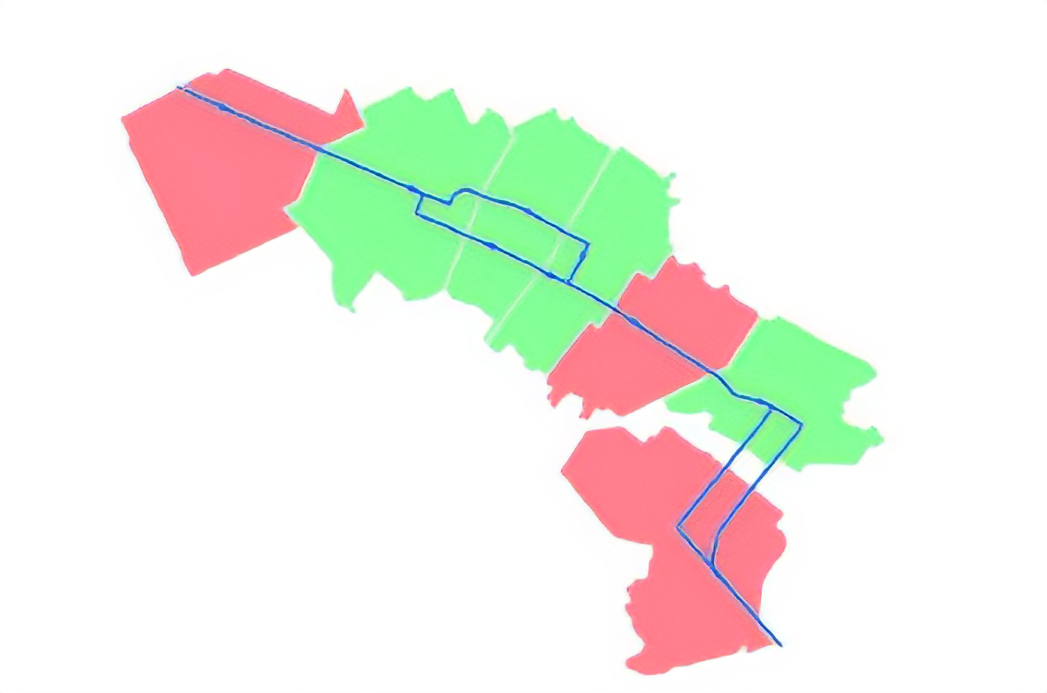
The benefits of public participation
During the Growing Together workshops, the public was more engaged compared to traditional engagement methods. Participants liked the 3D printed models and interactivity also influenced their engagement. People liked seeing the big picture and understanding how planning works, and they also liked being able to talk to the staff.
Workshop participants talked not only with staff, but also with each other. During the workshops, they were placing buildings on the study area model and had discussions linked to urban planning – why they liked something and why they didn’t. The workshops thus stimulated communication between people, which further increased engagement.
When the staff told people that they were going to capture the results of the workshops, digitally replicate them, and analyze the participants’ feedback, people supported in the idea very much.
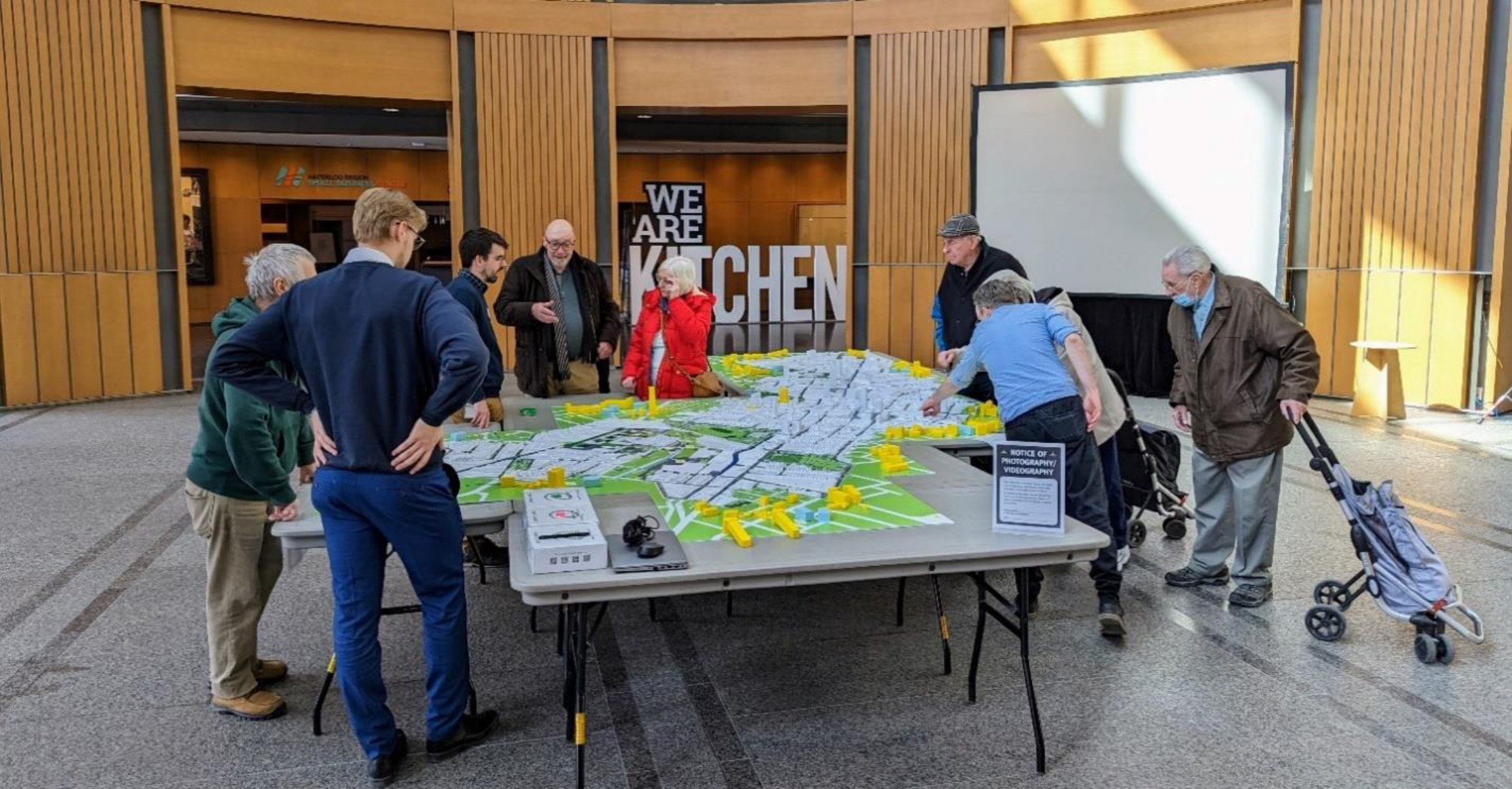
Overall, the Growing Together workshops significantly increased public participation in the urban planning process and made it more transparent. The public felt more involved in the planning process, planners received valuable feedback, and analyses were performed very efficiently thanks to Modelur. With this project, the City of Kitchener has successfully demonstrated how public participation and a thoughtful use of technology can significantly contribute to the inclusiveness and quality of the urban planning process.
Links:
Workshop Engagement Summary: https://www.engagewr.ca/35796/widgets/147255/documents/107600
Technical analysis of the workshops: https://www.engagewr.ca/35796/widgets/147255/documents/106198
Website with materials: https://www.engagewr.ca/growingtogether
https://www.kitchener.ca/en/strategic-plans-and-projects/growing-together.aspx
https://site.pheedloop.com/event/misaon2023/home
https://spring.smartcitiesconnect.org/Smart50Awards
https://en.wikipedia.org/wiki/Kitchener,_Ontario

